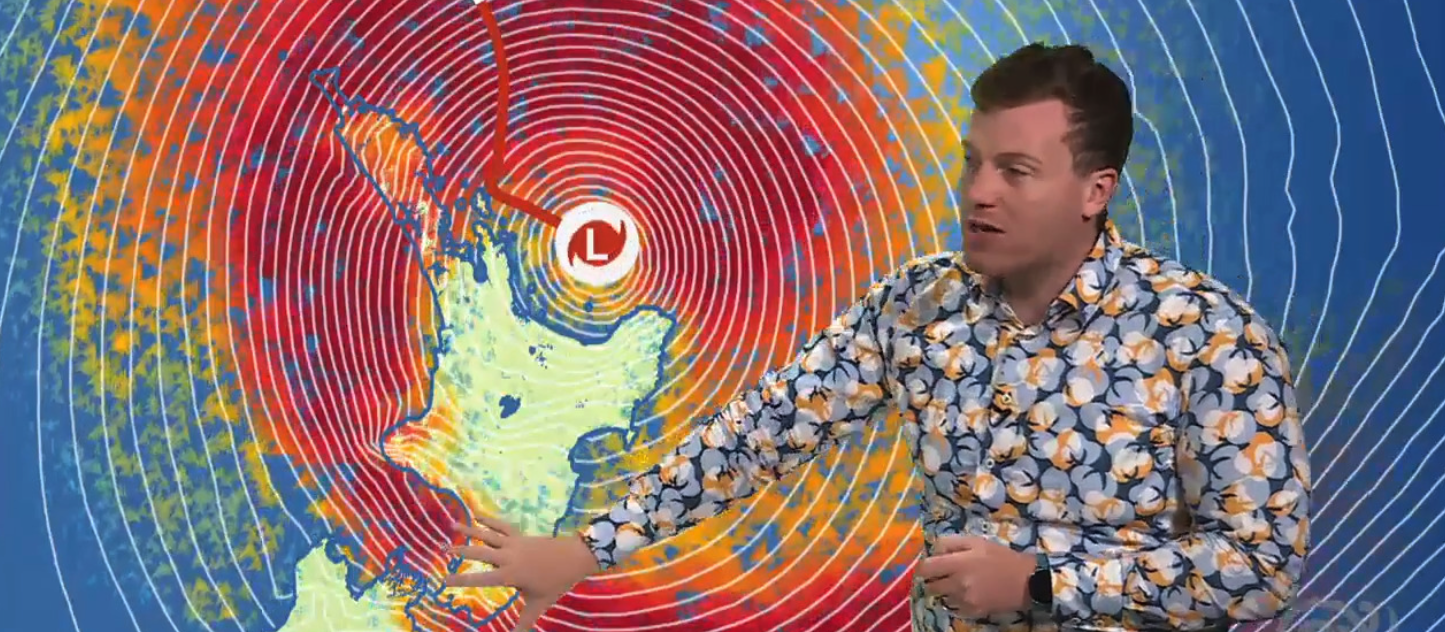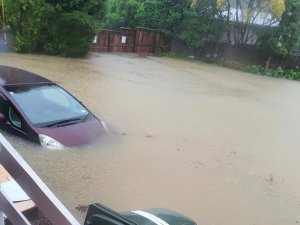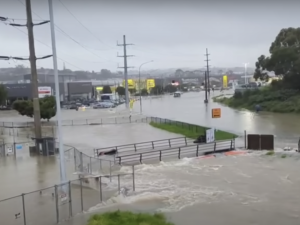Respiratory physician Lutz Beckert considers chronic obstructive pulmonary disease management, including the prevention of COPD, the importance of smoking cessation and pulmonary rehabilitation, and the lifesaving potential of addressing treatable traits. He also discusses the logic of inhaler therapy, moving from single therapy to dual and triple therapy when indicated, as well as other aspects of management
Birthing kits, emergency generators at the ready as Coromandel prepares for cyclone
Birthing kits, emergency generators at the ready as Coromandel prepares for cyclone

“It feels like it’s a pretty robust response”
Back-up generators, emergency medical supplies, satellite phones and birthing kits are all at the ready as part of the emergency response while Cyclone Gabrielle bears down on Thames-Coromandel.
The former tropical cyclone is expected to hit hardest overnight, with the Coromandel under a red heavy rain warning until 6am Tuesday, and a red strong wind warning until 9am Tuesday.
With vital parts of State Highway 25 closed from the flooding event at the end of last month – and more closures expected with Gabrielle’s onslaught – there have been concerns around accessing Thames Hospital and other medical facilities in an emergency.
Precautions were put in place last week for anyone deemed high risk or likely to need care, says Chris Lowry, interim director hospital and specialist services, Te Whatu Ora – Health New Zealand Waikato in a statement to New Zealand Doctor Rata Aotearoa. Some people were transferred to Hamilton to stay in safe accommodation.
Thames Hospital shifted some outpatient appointments to telehealth, but other treatments, like chemotherapy are continuing.
“Where necessary we are able to provide patients with accommodation near Thames Hospital to ensure their treatment is not disrupted by the cyclone,” Ms Lowry says.
Primary care providers continue to operate – many opened their doors today, while others switched to virtual consults and telehealth to help patients avoid travel.
Speaking to New Zealand Doctor, Jo Scott-Jones, Pinnacle Midlands Health Network medical director, says a “robust” emergency response plan was developed with Te Whatu Ora Waikato, local PHOs, St John, Civil Defence and the Midland Community Pharmacy Group.
The plan includes an agreement that Te Whatu Ora staff who get trapped in their area because of road closures or storm damage will help out in their local primary care facilities if needed, Dr Scott-Jones says.
Virtual health services are also ready for a potential surge in the coming days, he says.
“There’s been quite a lot of work going on over the last several days really since this has become apparent.
“Today practices are just starting to experience power cuts, and they’ve got generators to provide back up to that. All of our practices are operating fully, and the main issue has been power outages.”
Power outages mean a loss of cellphone coverage, so practices have been supplied with satellite radio phones, he says. PRIME kits had been updated and expanded, and practices have been supplied with emergency birthing kits.
Anxiety is likely to be high, Dr Scott-Jones says, as the region has been hit by a number of weather events this year, and all on the back of the COVID pandemic.
“People have got their own families and homes to be concerned about as well…The heightened anxiety through all of COVID just seems to have continued through all of these weather events as well.
“We’ve learned from the lessons of the past and built on that from each one of those, so I’m hoping they feel better prepared now than they would have done for an event [like this] three or four years ago because of the way that things are set up, and certainly this [incident management team] being so comprehensive and involving primary care I think it feels like it’s a pretty robust response.
“Hopefully none of it will need to be used.”
Here's a look at the way the wind wraps tightly around #cyclonegabrielle.
— MetService (@MetService) February 13, 2023
It's either windy now, or getting windy in the next 12-24 hours, across the majority of the country.
Lots of Warnings active. pic.twitter.com/IbpNMyyRAJ
Mercury Bay Medical Centre practice manager Lorraine Macallister told New Zealand Doctor this morning the practice, based in Whitianga on the Coromandel, was doing “really well” to date after a stormy night but the worst of Cyclone Gabrielle was yet to hit.
“At the moment we are finding a lot of our patients can’t get to us – so we are still trying to do those consults by phone or virtual consults where possible.
“But we are open if there is any urgent presentations coming through the front door. We are very lucky that we’ve got a team that was able to come in today.”
There have been occasional power outages yesterday and today as the cyclone started to impact, she says.
“Power has come on and off a couple of times yesterday and today. Fingers crossed, touch wood we are still up and running so far today with the power. But we do have a generator in place as back-up to help us through.”
The local Pathlab branch in Whitianga was also closed today due to the cyclone. “So we are taking samples ourselves at the clinic as much as we can.”
“The road going up north to Coromandel [township] is closed and there’s been another slip,” says Ms Macallister. “So now the only road down to Thames Hospital is via Whangamatā and Waihi, which I believe is still open.”
The normal route to Thames Hospital is via State Highway 25A between Kopu and Hikuai, but that is closed indefinitely after a section initially damaged by Cyclone Hale totally collapsed in the late January floods.
The second route, north to Coromandel township and down SH25, is now also temporarily closed due to Cyclone Gabrielle and slips, so the only route now is via Waihi. So what was usually just over a 60km journey taking about an hour is now about a 159km journey of about two-and-a-half hours.
Ms Macallister says the road closures can be quite scary for patients such as women in labour or those needing urgent care. “But we’ve got a really good team and a close relationship with St John. So if those situations present themselves, we will just work through our usual emergency plan and get patients stable and out as quickly as we can.”
Coromandel Family Health Centre has been open for business in the township but lost phone service for much of the morning and was reliant on a generator for power.
Receptionist Tessa Blyth, speaking to New Zealand Doctor at lunchtime today, says the power has been on and off since yesterday but the centre is using a generator and minimising its power usage. “We’re not sure how long power is going to be off for.”
“We’re mainly seeing acute patients and remaining open to see anybody who needs to be seen.”
She wasn’t sure of the roads status as hadn’t had time to check and its phone lines had been down for most of the morning. “So nobody has had any communication...you are lucky to have got through the phones only got back around lunchtime.”
Ms Blyth says plans are in place to get emergency acute patients case-by-case off the peninsula should roads fail, but implementation hasn’t been needed yet.
“Not in this storm, there has been issues with previous road blockages but not yet with Cyclone Gabrielle.”
Hato Hone St John has bolstered staffing numbers and volunteer first response units in the area ahead of the storm. It has also identified community-based care options should transporting patients become problematic.
“We are also very grateful to our colleagues and friends at Wellington Free Ambulance who have deployed specialist rescue-trained paramedics in 4WD vehicles to Whitianga and Hicks Bay in Northern Tairawhiti to support our teams,” Stu Cockburn, ambulance controller says in a statement.
New Zealand Defence Force Unimogs are also available to use, if necessary, Mr Cockburn says, along with a number of other Hato Hone St John 4WD vehicles that can be used in conjunction with those resources available from other partner agencies.
“We will remain flexible and responsive to the communities’ needs as this situation evolves and it becomes clearer where our resources will be of most benefit.
“However, it is important that we continue to prioritise safety, and do not respond in conditions that may endanger our people or our patients, which means there may be instances that we are simply unable to get to our patients. We will ensure measures are in place to provide support and advice by phone and use telehealth providers as appropriate until access is achieved.”
Additional staff have been rostered onto the communication centre’s clinical support team, he says, in case wind severity means people need to be triaged over the phone.
We're publishing this article as a FREE READ so it is FREE to read and EASY to share more widely. Please support us and the hard work of our journalists by clicking here and subscribing to our publication and website






![Barbara Fountain, editor of New Zealand Doctor Rata Aotearoa, and Paul Hutchison, GP and senior medical clinician at Tāmaki Health [Image: Simon Maude]](/sites/default/files/styles/thumbnail_cropped_100/public/2025-03/Barbara%20Fountain%2C%20editor%20of%20New%20Zealand%20Doctor%20Rata%20Aotearoa%2C%20and%20Paul%20Hutchison%2C%20GP%20and%20senior%20medical%20clinician%20at%20T%C4%81maki%20Health%20CR%20Simon%20Maude.jpg?itok=-HbQ1EYA)
![Lori Peters, NP and advanced health improvement practitioner at Mahitahi Hauora, and Jasper Nacilla, NP at The Terrace Medical Centre in Wellington [Image: Simon Maude]](/sites/default/files/styles/thumbnail_cropped_100/public/2025-03/2.%20Lori%20Peters%2C%20NP%20and%20advanced%20HIP%20at%20Mahitahi%20Hauora%2C%20and%20Jasper%20Nacilla%2C%20NP%20at%20The%20Terrace%20Medical%20Centre%20in%20Wellington%20CR%20Simon%20Maude.jpg?itok=sUfbsSF1)
![Ministry of Social Development health and disability coordinator Liz Williams, regional health advisors Mary Mojel and Larah Takarangi, and health and disability coordinators Rebecca Staunton and Myint Than Htut [Image: Simon Maude]](/sites/default/files/styles/thumbnail_cropped_100/public/2025-03/3.%20Ministry%20of%20Social%20Development%27s%20Liz%20Williams%2C%20Mary%20Mojel%2C%20Larah%20Takarangi%2C%20Rebecca%20Staunton%20and%20Myint%20Than%20Htut%20CR%20Simon%20Maude.jpg?itok=9ceOujzC)
![Locum GP Helen Fisher, with Te Kuiti Medical Centre NP Bridget Woodney [Image: Simon Maude]](/sites/default/files/styles/thumbnail_cropped_100/public/2025-03/4.%20Locum%20GP%20Helen%20Fisher%2C%20with%20Te%20Kuiti%20Medical%20Centre%20NP%20Bridget%20Woodney%20CR%20Simon%20Maude.jpg?itok=TJeODetm)
![Ruby Faulkner, GPEP2, with David Small, GPEP3 from The Doctors Greenmeadows in Napier [Image: Simon Maude]](/sites/default/files/styles/thumbnail_cropped_100/public/2025-03/5.%20Ruby%20Faulkner%2C%20GPEP2%2C%20with%20David%20Small%2C%20GPEP3%20from%20The%20Doctors%20Greenmeadows%20in%20Napier%20CR%20Simon%20Maude.jpg?itok=B0u4wsIs)
![Rochelle Langton and Libby Thomas, marketing advisors at the Medical Protection Society [Image: Simon Maude]](/sites/default/files/styles/thumbnail_cropped_100/public/2025-03/6.%20Rochelle%20Langton%20and%20Libby%20Thomas%2C%20marketing%20advisors%20at%20the%20Medical%20Protection%20Society%20CR%20Simon%20Maude.jpg?itok=r52_Cf74)
![Specialist GP Lucy Gibberd, medical advisor at MPS, and Zara Bolam, urgent-care specialist at The Nest Health Centre in Inglewood [Image: Simon Maude]](/sites/default/files/styles/thumbnail_cropped_100/public/2025-03/7.%20Specialist%20GP%20Lucy%20Gibberd%2C%20medical%20advisor%20at%20MPS%2C%20and%20Zara%20Bolam%2C%20urgent-care%20specialist%20at%20The%20Nest%20Health%20Centre%20in%20Inglewood%20CR%20Simon%20Maude.jpg?itok=z8eVoBU3)
![Olivia Blackmore and Trudee Sharp, NPs at Gore Health Centre, and Gaylene Hastie, NP at Queenstown Medical Centre [Image: Simon Maude]](/sites/default/files/styles/thumbnail_cropped_100/public/2025-03/8.%20Olivia%20Blackmore%20and%20Trudee%20Sharp%2C%20NPs%20at%20Gore%20Health%20Centre%2C%20and%20Gaylene%20Hastie%2C%20NP%20at%20Queenstown%20Medical%20Centre%20CR%20Simon%20Maude.jpg?itok=Z6u9d0XH)
![Mary Toloa, specialist GP at Porirua and Union Community Health Service in Wellington, Mara Coler, clinical pharmacist at Tū Ora Compass Health, and Bhavna Mistry, specialist GP at Porirua and Union Community Health Service [Image: Simon Maude]](/sites/default/files/styles/thumbnail_cropped_100/public/2025-03/9.%20Mary%20Toloa%2C%20Porirua%20and%20Union%20Community%20Health%20Service%20in%20Wellington%2C%20Mara%20Coler%2C%20T%C5%AB%20Ora%20Compass%20Health%2C%20and%20Bhavna%20Mistry%2C%20PUCHS%20CR%20Simon%20Maude.jpg?itok=kpChr0cc)